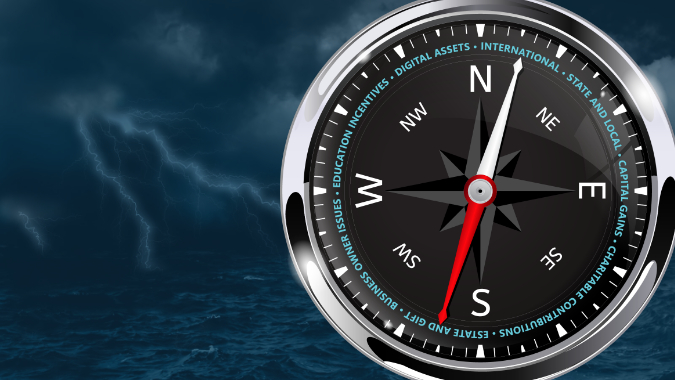
Additional Guidance Issued by SBA on Paycheck Protection Program
- Published
- Aug 27, 2020
- Topics
- Share
The Small Business Administration (“SBA”) continues to issue guidance on the Paycheck Protection Program (“PPP”). We recently reported to you on guidance in the form of frequently asked questions (“FAQs”), effective as of August 4, 2020, on the subject of loan forgiveness. Highlights of additional guidance in the form of FAQs and interim final rules issued as of August 11 and August 24, 2020 follow below.
Economic Injury Disaster Loans and PPP Loans
- Background – The Economic Injury Disaster Loan (“EIDL”) program provides small businesses (500 employees or less) and nonprofits with low interest loans of up to $2 million. Borrowers can request an emergency advance on the loan of up to $10,000. This loan advance is fully forgiven even if an EIDL is denied (but see below).
- If a PPP borrower received an EIDL advance, SBA is required to reduce the borrower’s PPP loan forgiveness amount by the amount of the EIDL advance. SBA will deduct the amount of the EIDL advance from the forgiveness amount remitted by SBA to the lender.
- If a PPP loan is not forgiven in full (including if there has been a reduction in the forgiveness amount for an EIDL advance), any remaining balance due on the PPP loan must be repaid by the borrower. If a borrower is determined to have been ineligible for the PPP loan for any reason, SBA may seek repayment of the outstanding PPP loan balance or pursue other available remedies.
- A borrower that received an EIDL advance in excess of the amount of its PPP loan will not receive any forgiveness on the PPP loan, because the amount of an EIDL advance is deducted from the PPP loan forgiveness amount.
Appeals of SBA PPP Loan Review Decisions
- For a PPP loan of any size, SBA may undertake a loan review at any time in SBA’s discretion. Only a final SBA “loan review decision” can be appealed to the SBA Office of Hearings and Appeals (“OHA”). A PPP borrower cannot file an OHA appeal of any decision made by a lender concerning a PPP loan. For this purpose, an SBA loan review decision is an official written decision by the SBA, after SBA completes a review of a PPP loan, that finds a borrower (i) was ineligible for a PPP loan; (ii) was ineligible for the PPP loan amount received or used the PPP loan proceeds for unauthorized uses; (iii) is ineligible for PPP loan forgiveness in the amount determined by the lender in its decision issued to SBA (except for the deduction of any EIDL advance); and/or (iv) is ineligible for PPP loan forgiveness in any amount where the lender has issued a full denial decision to SBA.
- A PPP borrower can request an SBA review of a lender decision to deny the borrower’s loan forgiveness application in full, but that request is for a review by SBA, not an OHA appeal.
- A borrower may exercise any other rights it has under applicable law against a PPP lender regarding a lender decision.
- An appeal by a PPP borrower of any SBA loan review decision does not extend the deferral period of the PPP loan.
- If SBA remits to the lender the PPP loan forgiveness amount set forth in the decision issued by the lender to SBA (except for the deduction of any EIDL advance), the borrower may not file an appeal with OHA, and the borrower must begin repayment of any remaining balance of its PPP loan.
- Only the borrower on a loan for which SBA has issued a final SBA loan review decision has standing to appeal the SBA loan decision to OHA. Individual owners of a borrower and lenders do not have standing to appeal an SBA loan review decision.
- An appeal petition must be filed within 30 calendar days after (i) the appellant’s receipt of the final SBA loan review decision or (ii) notification by the lender of the final SBA loan review decision, whichever is earlier.
Eligibility of Certain Nonpayroll Costs for Loan Forgiveness
- The amount of loan forgiveness requested for nonpayroll costs may not include any amount attributable to the business operation of a tenant or sub-tenant of the PPP borrower or, for home-based businesses, household expenses. The guidance provides illustrative examples.
- A borrower rents an office building for $10,000 per month and subleases out a portion of the space to other businesses for $2,500 per month. Only $7,500 per month is eligible for loan forgiveness.
- A borrower has a mortgage on an office building it operates out of, and it leases out a portion of the space to other businesses. The portion of mortgage interest that is eligible for loan forgiveness is limited to the percent share of the fair market value of the space that is not leased out to other businesses. So, if the leased space represents 25% of the fair market value of the office building, then the borrower may only claim forgiveness on 75% of the mortgage interest.
- A borrower shares a rented space with another business. When determining the amount eligible for loan forgiveness, the borrower must prorate rent and utility payments in the same manner as on the borrower’s 2019 tax filings, or if a new business, the borrower’s expected 2020 tax filings.
- A borrower works out of his/her home. When determining the amount of nonpayroll costs that are eligible for loan forgiveness, the borrower must include only the share of covered expenses that were deductible on the borrower’s 2019 tax filings, or if a new business, the borrower’s expected 2020 tax filings.
Eligibility of Rent Payments Made to a Related Party for Loan Forgiveness
- Rent payments made to a related party are eligible for loan forgiveness as long as:
- The amount of loan forgiveness requested for rent or lease payments to a related party is no more than the amount of mortgage interest owed on the property during the Covered Period that is attributable to the space being rented by the business; and
- The lease and the mortgage were entered into prior to February 15, 2020.
In this context, the related party itself would not also be eligible to request forgiveness for this amount.
- Any ownership in common between the business and the property owner is treated as a related party for this purpose.
- The borrower must provide its lender with mortgage interest documentation to substantiate these payments.
- While rent or lease payments to a related party may be eligible for forgiveness, mortgage interest payments made to a related party are not eligible for forgiveness.
Treatment of Owners
- Owner-employees with less than a 5% ownership stake in a C corporation or S corporation are not subject to the owner compensation Prior guidance capped the amount of loan forgiveness for payroll attributable to an owner-employee. This exemption is intended to cover owner-employees who have no meaningful ability to influence decisions over how loan proceeds are allocated.
Group Health Care Benefits and Loan Forgiveness
- Vision and dental benefits are included in the employer expenses for employee group health care benefits (including insurance premiums) that are considered payroll costs eligible for loan forgiveness.
EisnerAmper will keep you informed on new developments regarding PPP loans and any new governmental initiatives in response to the continuing COVID-19 situation.
Contact EisnerAmper
If you have any questions, we'd like to hear from you.
Receive the latest business insights, analysis, and perspectives from EisnerAmper professionals.











